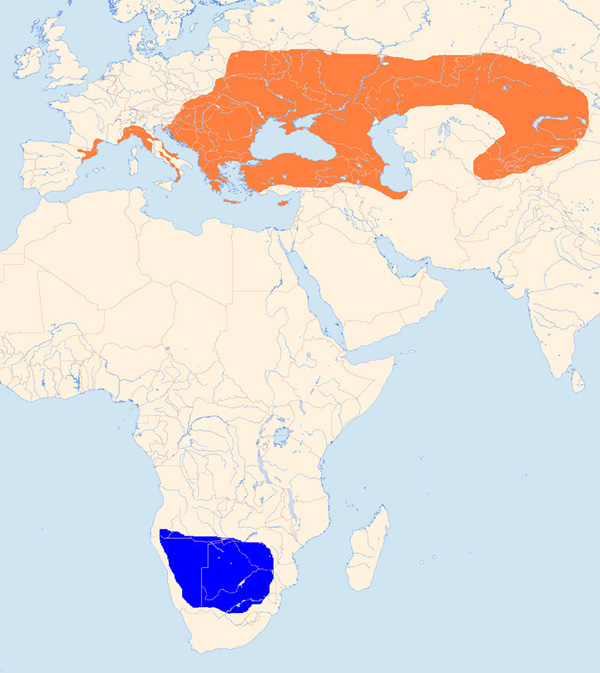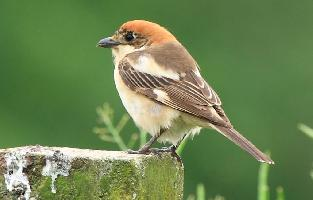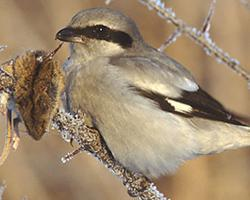
Descrierea animalului
The Lesser Grey Shrike (Lanius minor) is a captivating bird species, primarily belonging to the shrike family, known for its unique hunting behavior and distinctive appearance. This bird is a summer visitor to Europe and western Asia and migrates to the warmer climates of Africa during the winter months, showcasing a fascinating pattern of long-distance migration.Physically, the Lesser Grey Shrike presents a striking figure, measuring approximately 20-23 cm in length, with a wingspan that ranges between 30-32 cm. It has a relatively robust body, with a distinctive black mask that extends across its eyes, lending it a bandit-like appearance. This mask is contrasted sharply against its light grey upperparts and pristine white underparts, creating a stark visual contrast that is both beautiful and arresting. The bird's tail is long and black, with white outer feathers that become visible during flight. Its wings are black with a noticeable white patch, adding to its distinctive appearance. The beak of the Lesser Grey Shrike is hooked and robust, an adaptation that aids in its carnivorous diet, allowing it to catch and kill its prey with precision.
One of the most fascinating aspects of the Lesser Grey Shrike is its hunting behavior. It is known for its method of impaling its prey on thorns or barbed wire, creating a cache that it can return to later. This behavior, often referred to as "lardering," is thought to help in marking territory, attracting mates, or simply as a way to store food. Its diet mainly consists of large insects, small birds, rodents, and lizards.
The breeding habits of the Lesser Grey Shrike involve meticulous preparation of the nest, which is usually placed in a tree or a tall bush. The female lays 4-6 eggs, which are incubated for about 15 days. Both parents are involved in feeding the chicks, which fledge approximately 19-20 days after hatching.
The Lesser Grey Shrike prefers open country with scattered bushes and trees, which provides ample hunting grounds and suitable nesting sites. However, like many bird species, it faces threats from habitat destruction and degradation, which impact its breeding and feeding habitats.
In terms of vocalization, the Lesser Grey Shrike has a varied repertoire that includes harsh, chattering calls and softer, melodious songs. These vocalizations play a crucial role in territorial displays and communication between mates.
Conservation efforts for the Lesser Grey Shrike include habitat preservation and restoration projects aimed at maintaining the open landscapes that these birds require for breeding and feeding. Despite these efforts, the Lesser Grey Shrike is listed as Near Threatened on the IUCN Red List, indicating that it is at risk of becoming endangered if the factors threatening its survival are not mitigated.
In conclusion, the Lesser Grey Shrike is a fascinating and beautiful bird, known for its distinctive appearance, intriguing hunting behavior, and complex life cycle. Its presence enriches the biodiversity of the regions it inhabits, making its conservation a matter of importance for the natural world.
Harta răspândirii

Animale similare
Fotografii noi cu animale
Top 10 animale
- Diana monkey (Cercopithecus diana)
- Dolphin gull (Leucophaeus scoresbii)
- Galápagos tortoise (Geochelone nigra complex)
- Moustached guenon (Cercopithecus cephus)
- Japanese spider crab (Macrocheira kaempferi)
- Colossal squid (Mesonychoteuthis hamiltoni)
- Fox tapeworm (Echinococcus multilocularis)
- Stone loach (Barbatula barbatula)
- Japanese macaque (Macaca fuscata)
- Barbary macaque (Macaca sylvanus)

